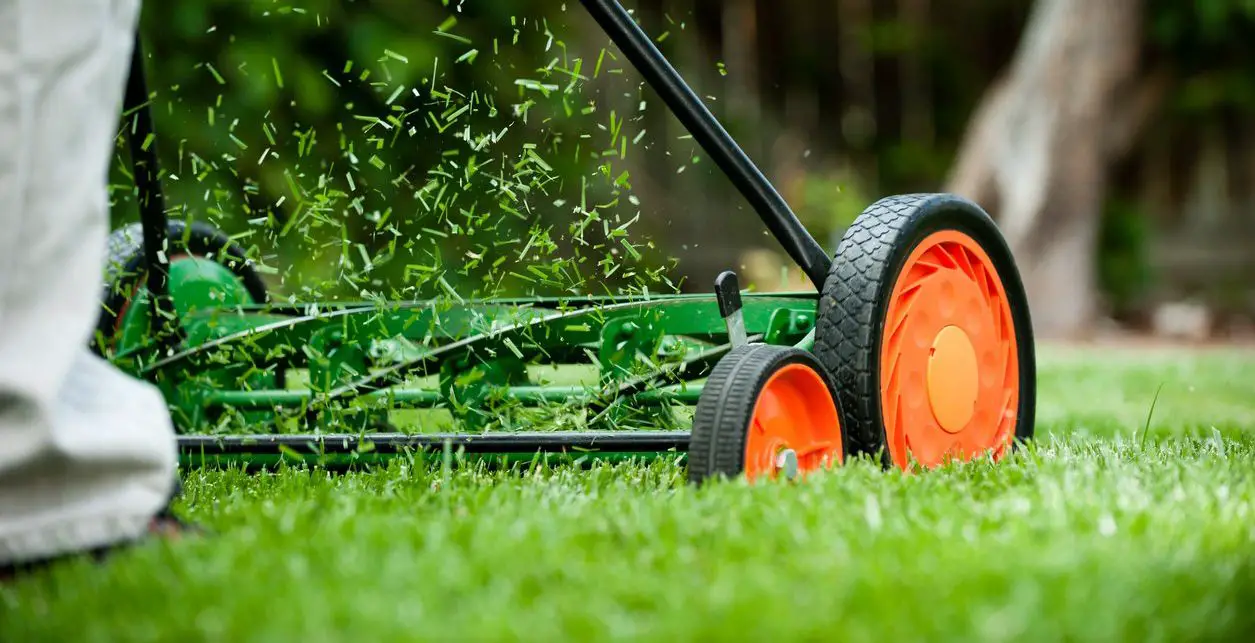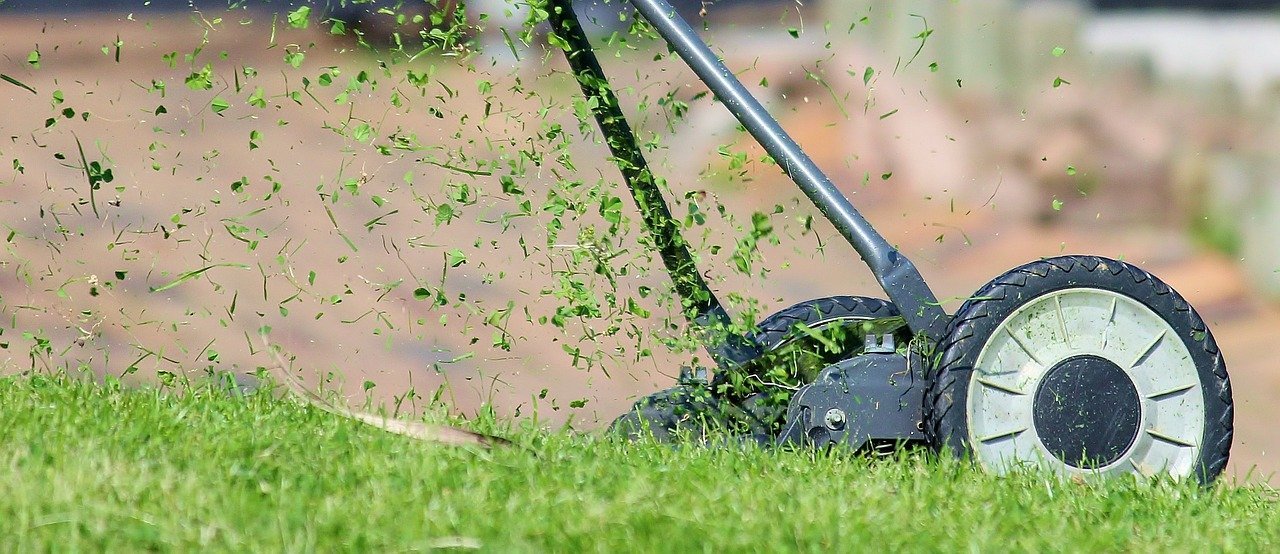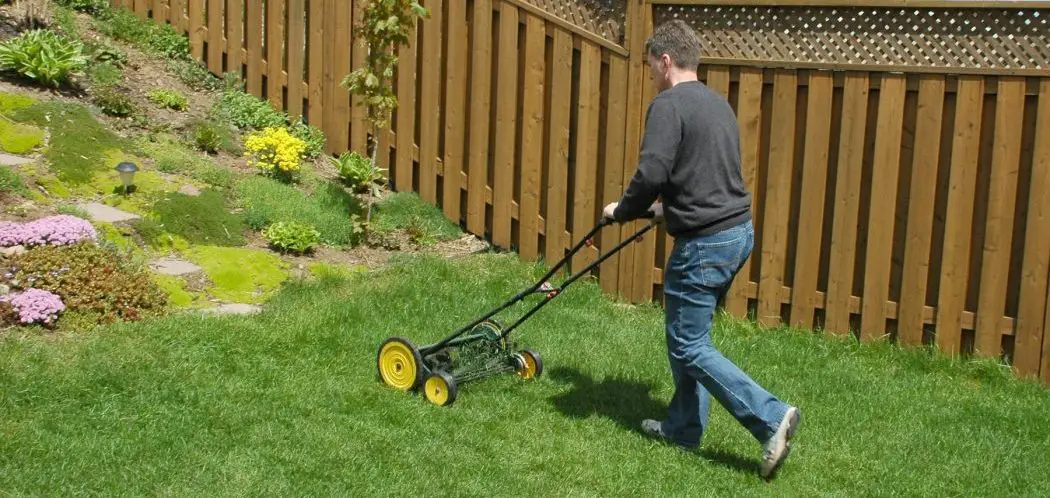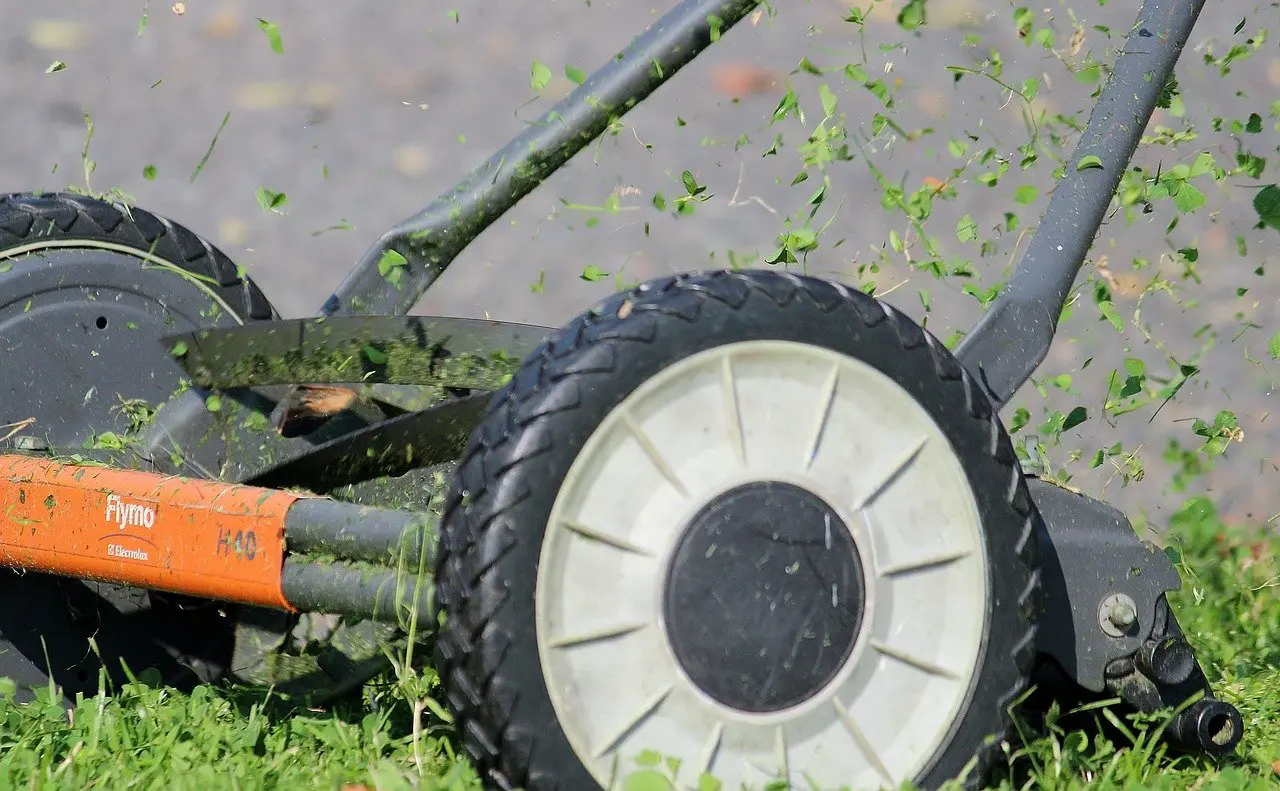Reel mowers, also called cylinder mowers, are making a comeback among eco-conscious homeowners for their quiet operation, lighter environmental impact, and ability to create a clean, precision cut. These old-school mowers use a helical rotating blade to slice each grass blade cleanly rather than tearing it.
However, diligent reel mower maintenance is crucial to getting that sought-after flawless cut and keeping your mower performing smoothly for years. Unlike modern rotary mowers, reel models require much more frequent care and sharpening to hum along.
Reel mowers require frequent maintenance like blade sharpening every 4-6 weeks, annual cut height adjustment, thorough post-mow cleaning, monthly lubrication, checking/tightening hardware every 2-3 mows and proper winter storage prep.
In this comprehensive guide, we’ll cover everything you need to know about keeping your reel mower tuned up and ready to manicure your lawn through attentive maintenance, including:
- Thorough post-use cleaning rituals
- Optimal blade cylinder sharpening schedule and techniques
- Seasonal cut height adjustments
- Lubricating moving components
- Checklists for securely tightening all hardware
- Assessing and repairing wheels/tires
- Winterizing storage best practices
Let’s look at why staying on top of routine mower maintenance should be part of your regular lawn care regimen when using a reel mower.
Why Consistent Reel Mower Maintenance Matters
Perhaps you purchased a reel mower after being lured in by the quiet operation, clean cut, and classic charm of these old-fashioned lawn clippers. But the romance will quickly fade if you don’t stay on top of the required care.
Sharp Blades = Quality Cut
The very nature of how reel mowers operate demands proper maintenance. The spinning helical blade cylinder must be incredibly sharp to slice each grass blade cleanly rather than shredding it. Quickly dulling blades lead to torn, frayed grass ends rather than meticulously manicured lawn perfection.
Proper Height Setting
These mowers also require periodic adjustment to set the desired cut height as low as 1/2 inch for putting green-style results. Improper set up leaves grass uneven and unrefined.
Smooth Function
Finally, any breakdowns or stuck components make it impossible to achieve that flawless reel cut appearance and feel. Proactive lubrication and tightening prevents untimely issues.
So embrace reel mower care and fine-tuning as the necessary price of admission for an immaculate lawn, rather than a bothersome chore. Let’s get into the must-do maintenance tasks and optimal frequency.
1. Thorough Cleaning After Each Mow
The first key to trouble-free reel mower operation is cleaning your mower immediately after each and every use. Quick cleaning prevents several problems:
Prevent Premature Rust and Corrosion
Allowing moist grass clippings to remain clinging to any steel components after mowing will rapidly accelerate rust and corrosion. Always be sure to brush off clippings after each cut.
Leaving wet grass debris on parts like the blade cylinder, bedknife, frame, wheels and handles promotes oxidation and rust.
Maintain Sharp Cutting Blades Longer
Allowing dry debris around the reel cylinder quickly dulls the fine cutting edges on your blades. Prompt cleaning removes micro-abrasives and preserves blade sharpness longer between full sharpenings.
Small grass clumps around cylinder ends act like sandpaper on the delicate edges you want surgically sharp.
Avoid Jamming Moving Parts
Wet clippings also cling to vital moving parts and drive components under the mower deck. Thorough cleaning prevents sticky, moist grass from clogging and seizing up rollers, belts, chains and axles.
Hardened debris buildup leads to jammed wheels, slipping belts and stuck roller chains.
Here is the proper cleaning routine to perform after every mowing session:
- Use a stiff brush or compressed air to remove grass remnants on the blade cylinder, guards, wheels and handles.
- Tip the mower deck up and check under it, cleaning out any accumulated debris.
- Carefully wipe down the full blade cylinder and bedknife edges with an oiled cloth for added protection and lubrication.
- Avoid using water or harsh cleaners that could wash away vital grease or damage parts.
Follow this quick but thorough post-mow cleaning ritual after each use, and you’ll keep your reel mower running smoothly for years while maximizing blade sharpness between grindings.
2. Sharpening Your Reel Cylinder Blades
The very heart of a reel mower is the spinning helical blade cylinder that churns against the bedknife to slice each grass blade cut-by-cut. Keeping the reel cylinder razor sharp through grinding is absolutely essential to performance and lawn appearance.
Optimal Reel Blade Sharpening Frequency
Most reel mowers need sharpening about every 4-6 weeks when mowed 1-2 times per week during peak growing seasons. It’s important to learn to check blade sharpness visually and by feel before each use.
Watch for these signs that sharpening is overdue:
- Visible light glint indicating rounded edges
- The cut grass stems appear frayed or shredded rather than cleanly cut
- Uncut grass blades are bending over and mashing down rather than getting sliced
- Your mower requires more and more exertion to push and cut
- Blades feel rough rather than dangerously smooth if touched gently
Err on the side of more frequent sharpening intervals whenever grass stops cutting cleanly and easily. Waiting too long between cylinder grinding leads to poorer lawn appearance and mower performance.
Sharpening Your Reel Cylinder at Home
Many homeowners opt to self-sharpen their reel mower blades using a simple grinding tool either powered by hand or by a power drill. Here are the basic steps:
Step 1) Disconnect the chain or belt cylinder drive if possible to prevent blade rotation during sharpening.
Step 2) Obtain the proper grinding head for your mower – either a handheld roller guide or electric angle grinder with a tensioning guide.
Step 3) With the proper sharpening head, lightly and evenly grind the length of the blade from end to end following its helical contour. Rotate the cylinder as you grind each section until the full edge appears freshly sharpened top to bottom.
Step 4) Carefully vacuum out all metal filings from the mower deck and reel assembly when finished sharpening to prevent leftover debris from accelerating wear.
Step 5) Test cut performance on a small patch of turf and repeat grinding if the cut quality seems less than perfect. Several initial grindings may be needed to restore the reel to near-new sharpness if it was heavily blunted.
With practice and patience, most homeowners can successfully maintain their own reel blade sharpness using a properly sized grinding head and gentle technique. But for dinged, bent or deeply gouged blades, professional help may be recommended…
Professional Reel Mower Sharpening Services
For reel mowers seeing frequent heavy use on expansive lawns or those with thick nicks, burrs or gouges in the long blade edges, you may wish to utilize professional sharpening services 1-2 times per mowing season.
Benefits of Pro Sharpening:
- Powered shop machinery allows truer sharpening in skilled hands
- Bent or damaged blade sections can be re-straightened
- Allows precise relief/land grinding unseen by the naked eye
- Heightened precision leads to noticeably better cut quality
Downsides of Pro Sharpening:
- Costs approximately $40-75 per cylinder sharpening
- The inconvenience of safely transporting your mower to and from the sharpening shop
Assess the current state of your blades and your own DIY sharpening comfort level and skills to decide whether professional cylinder sharpening or grinding is advisable to restore a badly worn reel.
But with proper routine care, most mowers can be sharpened periodically at home between full grindings as needed. Keeping blades exquisitely sharp is what enables beautiful reel mower results.
3. Adjusting Your Reel-to-Bedknife Clearance
Along with sharpening, properly adjusting the reel-to-bedknife clearance is a vital tuning task before each mowing season and anytime you want to change grass height.
Here is how to correctly set the crucial reel-to-bedknife spacing:
Step 1) Loosen the bedknife mounting nuts to allow movement fore and aft.
Step 2) Set the mower deck at your desired height based on the notch indicator or wheel axle positions.
Step 3) Turn reel cylinder by hand while incrementally raising bedknife until you feel steady, even contact/friction along the full blade length with no gaps, just a slight whisper of friction.
Step 4) Carefully re-tighten the bedknife hardware without shifting its alignment.
Step 5) Do several test passes in thick turf to confirm ideal cut quality before fully engaging the blade cylinder.
With a freshly sharpened blade and clearance perfectly gapped, you’ll get that immaculate reel cut appearance while the mower glides over turf. But beware these common misadjustments:
- Bedknife too far from reel cylinder = grass bending over rather than cutting
- Bedknife too close to reel = difficult mower movement and excess friction/heat
Achieving the optimal reel-to-bedknife alignment takes practice but makes mowing effortless. Now let’s discuss optimal lubrication.
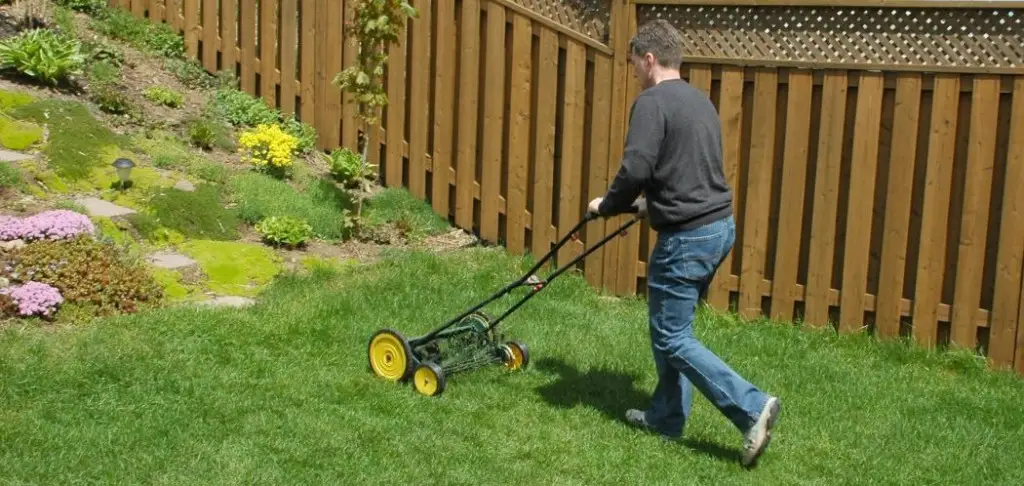
4. Lubricating Key Moving Parts
Another lesson carried over from the reel mower glory days your machine wants you to remember – generous lubrication protects against premature breakdowns.
What Components to Lubricate
- Drive chains or belts
- Wheel axles and pivot points
- Handle mount hinge points
- Bedbar adjusting nuts
- Any metal-on-metal friction surfaces
Appropriate Lubricant Types
- Light machine oil for drive chains, axles and hinges
- Lithium grease for gear teeth
- Powdered graphite for bedbar slides
Recommended Lubrication Frequency
- Chain drives and axles every 2-3 mows
- Other pivot points monthly
- Annual disassembly to grease internal parts
Don’t skimp on keeping everything well-oiled and silky smooth. Proper lubrication prevents oxidation, mechanical drag, stuck adjustments and eases mower handling over uneven terrain.
Now let’s talk about checking and securing potentially loose fasteners.
5. Checking and Tightening All Hardware
Loose nuts, bolts, screws or parts quickly lead to damage or poor performance. Get in the routine of methodically checking these critical components:
- Handlebar mounting bolts
- Cutting height adjustment rods
- Bedbar locking nuts
- Chain/belt guard hardware
- Wheel and axle bolts
- Reel bearing mounts
Keep a socket set and wrenches handy to re-tighten any loose fasteners detected. And replace any degraded or missing hardware ASAP.
Loose components lead to unstable, subpar mower operation and incorrectly set cutting parts. Don’t mow again without verifying all pieces are secure.
6. Caring for Handles and Grips
The seemingly humble handlebar on your reel mower takes quite a beating each mowing session. Check its condition regularly and repair issues promptly.
Signs of Wear Requiring Attention:
- Splintering wooden handles
- Loose, wobbly feel at mounting point
- Torn or worn foam hand grips
- Rusting metal handles
Solutions for Restoring Handling:
- Sand splinters smooth and re-seal wood handles
- Replace seriously cracked or broken wood handles
- Re-secure loose handle mounts with new hardware
- Replace damaged foam grips that absorb vibration and sweat
- Sand rust from metal handles and repaint
Your reel mower handles are safety-critical components allowing you to operate and control it securely across changing turf terrain. Don’t neglect needed handle repairs that could lead to accidents or difficulty maintaining a straight mowing path.
7. Checking and Correcting Wheels/Tires
It’s not just the slicing components that keep a reel mower tracking true – properly functioning wheels and tires play a huge role.
Inspect Wheels and Tires for:
- Correct air pressure/compression
- Binding when spun
- Debris caught around axles
- Cracked or damaged tires
- Wheels that wobble indicating bent axles
Solutions for Wheel/Tire Issues:
- Inflate pneumatic tires to recommended PSI
- Confirm wheels spin freely without sticking or grabbing
- Remove objects like stones wrapped around axles
- Replace heavily worn or cracked tire sidewalls
- Repair bent axles causing wheel wobble
Properly aligned wheels with good tread contact and inflation guide the mower straight and allow it to easily ride up and over terrain contours. Don’t force an unwilling or crooked-tracking mower.
8. Off-Season Storage Best Practices
The final important maintenance task comes when lawn mowing season ends. Properly storing your reel mower protects your investment.
Recommended Off-Season Storage Steps
- Fully clean mower of all grass and debris
- Touch up dings/scratches in paint to prevent rust
- Lubricate key parts to prevent seizing over winter
- Tighten hardware and adjust bedknife away from reel
- Store mower cleaned, dry and indoors rather than in a damp shed
- Consider covering with a breathable tarp to limit dust and pests
- Avoid resting mower on blade cylinder – use wall mount or wheels-down
Taking extra time to store your reel mower properly saves big hassles and costly repairs come next spring. A well-preserved mower jumps back into lush mowing action when warm weather returns.
Maintain Your Reel Mower for Lasting Performance
While reel mower care demands more attention than modern rotary models, a little routine diligence goes far in preserving beautiful cut quality and smooth function for years of reliable service.
Stay on top of regular tasks like blade sharpening every 4-6 weeks, annual height adjustments, post-use debris cleaning, monthly lubrication, and evaluating/tightening hardware every few mows.
And prep your mower meticulously for off-season down time. Follow these guidelines and all the components will hum along like clockwork year after year delivering pristine striped cuts.
Let us know your own reel mower care tips and tricks in the comments below!

